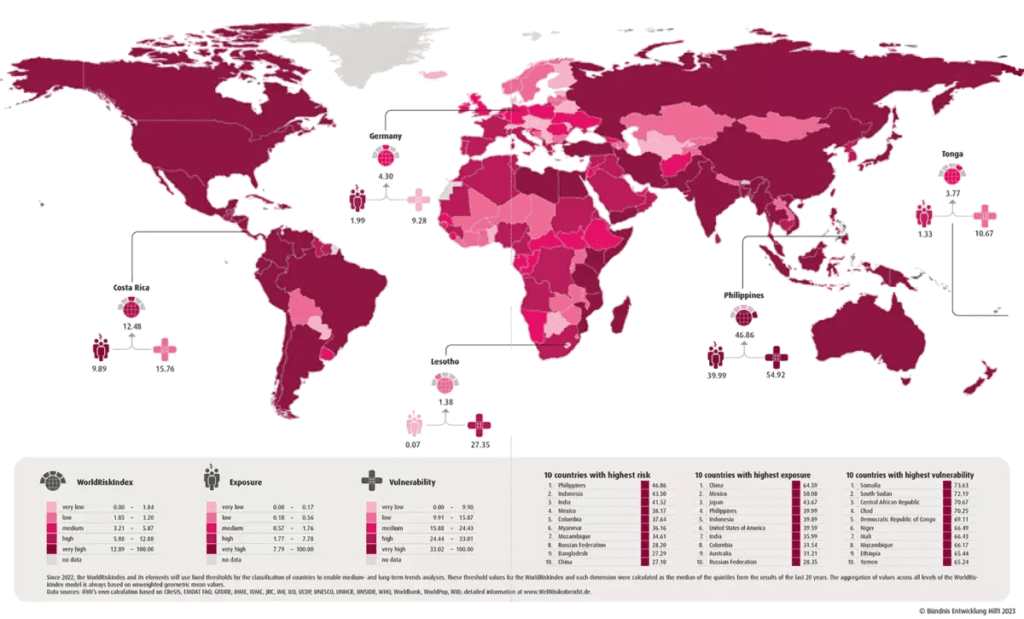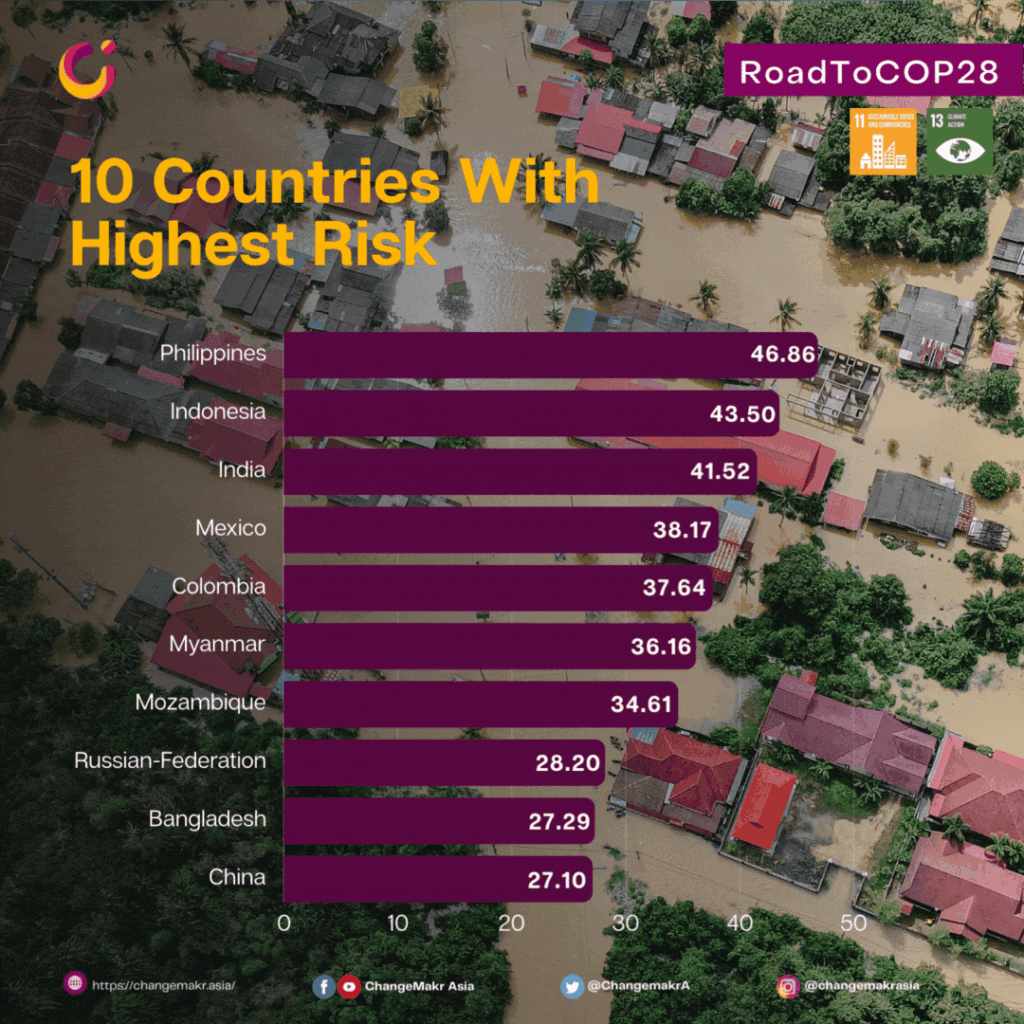The World Risk Report 2023 dissects vulnerability into three critical dimensions: Susceptibility, Coping, and Adaptation. Three countries in Asia are among those with the highest disaster risk worldwide.
In a world increasingly defined by the unpredictable fury of nature, the WorldRiskReport 2023 sheds light on a stark reality: countries like the Philippines, Indonesia, and India bear the brunt of disaster risk, with indices of 46.86, 43.50, and 41.52, respectively. This report, a comprehensive assessment of disaster risk for 193 countries, unveils the intricate dance between human society and the relentless forces of nature.
RELEVANT SUSTAINABLE GOALS



Worldmap of Risk 2023
At the heart of the WorldRiskIndex lies the concept of exposure – the degree to which populations stand vulnerable to the ravages of earthquakes, tsunamis, floods, cyclones, droughts, and the insidious rise of sea levels. But the story of disaster risk is more than a tale of exposure; it’s a narrative deeply entwined with the very fabric of societal resilience and response.
The report dissects vulnerability into three critical dimensions: Susceptibility, Coping, and Adaptation.
(1). Susceptibility paints a picture of societal structures that, like a house of cards, amplify the damage and chaos wrought by natural events. It’s about the inherent characteristics that predispose communities to disaster, setting the stage for tragedy when calamity strikes.
(2). Coping, on the other hand, is about the immediate response – the capacity of societies to confront these disasters head-on. It’s a measure of the resources, both formal and informal, that communities marshal in the face of adversity. This dimension encapsulates the actions taken in the aftermath of a disaster to stem the tide of destruction and begin the process of recovery.
Then there’s (3). Adaptation – the long-term strategy, the forward-thinking planning that looks beyond the immediate aftermath. Adaptation is about the anticipatory changes in societal structures, the systemic shifts designed to mitigate or avoid future adverse impacts. It’s a reflection of a society’s ability to learn from the past and evolve, to transform vulnerabilities into strengths.

The WorldRiskReport 2023 goes beyond the mere analysis of risk; it delves into the complex interplay between crises and the diverse tapestry of society. Diversity, in all its forms, emerges as a critical factor in how disaster risk is distributed within a community. The report illuminates a harsh truth: while disasters and crises are indiscriminate in their immediate impact, their long-term consequences disproportionately burden marginalized groups. Women, persons with disabilities, and members of the queer community often find themselves facing the harshest repercussions, their vulnerabilities magnified in the wake of catastrophe.
It serves as a stark wake-up call to the international community. It underscores the pressing need for holistic strategies that confront both the immediate dangers of natural disasters and the diverse requirements and strengths within societies. As the world contends with more frequent and severe natural disasters, the report emphasizes the vital need for creating resilient, inclusive societies. These societies must be equipped to endure nature’s challenges while ensuring the safety and well-being of every individual.
Lead image courtesy of Rough Daily.



